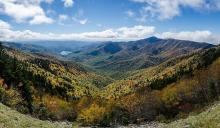North Carolina Aims to Improve Mapping Data
A mapping method to accurately depict broadband coverage in the U.S. remains elusive. The Federal Communications Commission (FCC) has announced that they intend to work on the issue but officials in North Carolina aren’t waiting. They’ve launched their own efforts to document Internet access speeds in order to challenge to the FCC’s broadband coverage map, the basis for many loan and grant programs.
North Carolina began seeking self-reporting data from residents in 2017 via their online NC OneMap tool. With only around 6,000 people using the tool, however, state officials such as Jeff Sural have decided to seek help from the Measurement Lab (M-Lab), which has launched similar projects in Seattle and Pennsylvania. Sural is the state’s director of Department of Technology’s broadband infrastructure office and he's seeking ways to ensure communities in North Carolina have access to funding to expand rural broadband access.
Streamlining for the Masses
The goal of the new effort will be to make gathering the data as simple as possible. The NC OneMap site requires users to jump from a speed testing page back to the mapping site in several steps. M-Lab and North Carolina want to develop an application that will gather upload and download speed, IP address and coordinates of the device at the time of the test. They also plan to collect information on ISP, latency, and whether the connection is throttled or manipulated in any way.
In an interview with StateScoop, Sural said:
“So far, one thing we have gleaned from our crowdsourcing tool is that there are a number of locations in areas where the FCC says there is [download coverage of 25 megabits per second and an upload rate of 3 Mbps] that are not getting those speeds.”
Faulty Maps Need Fixing



